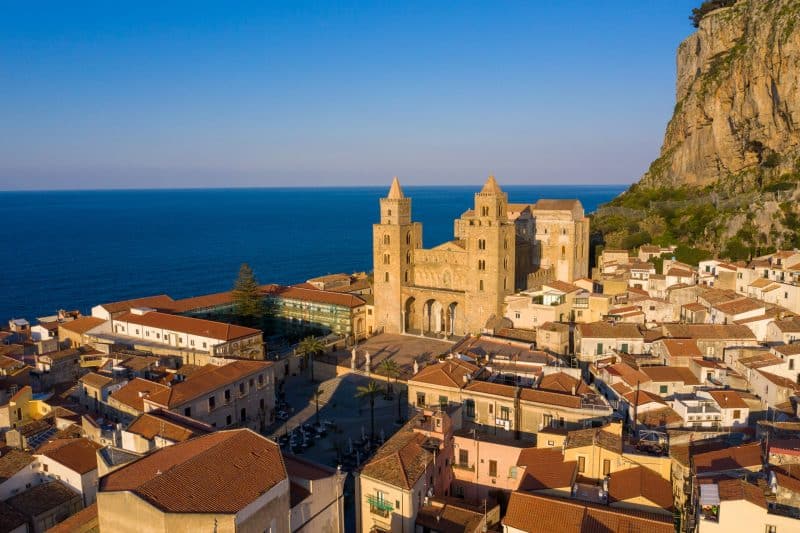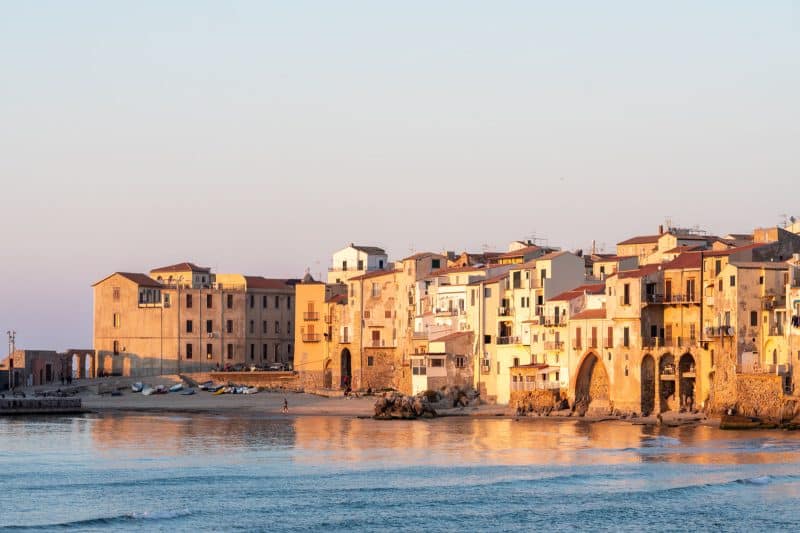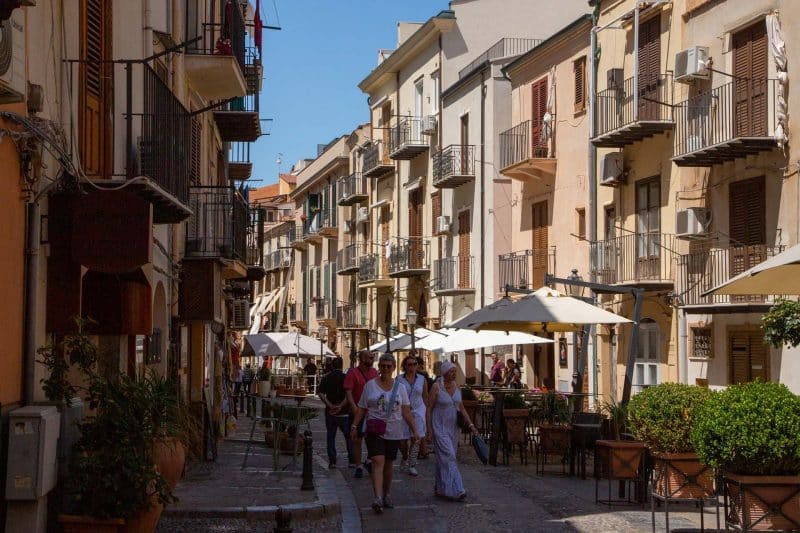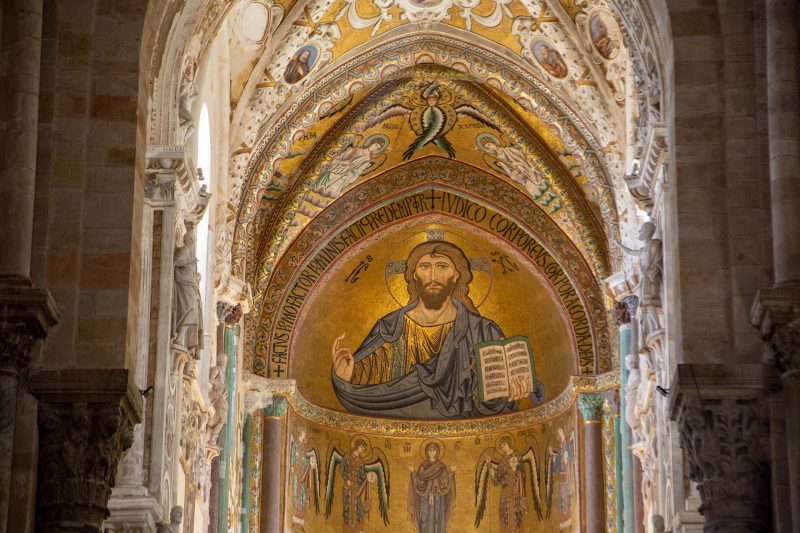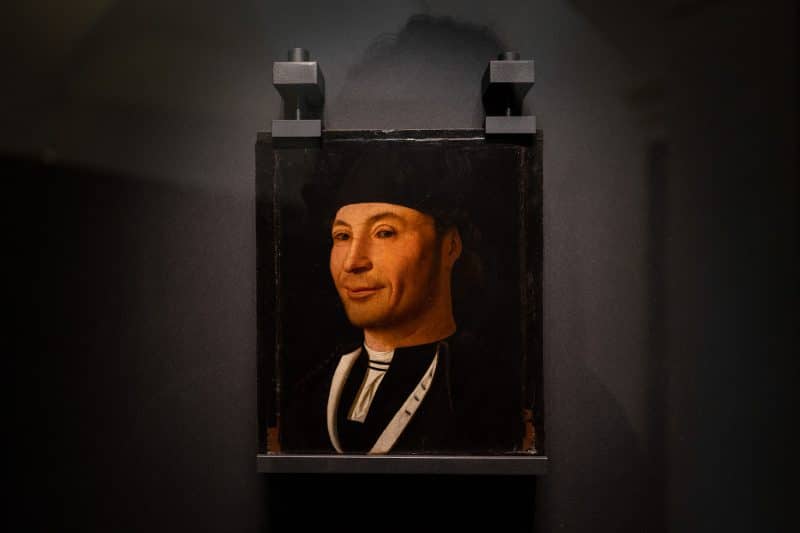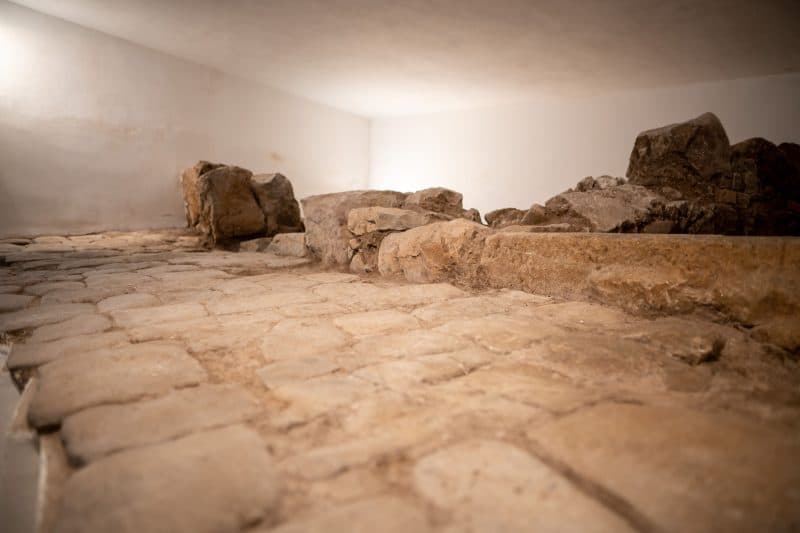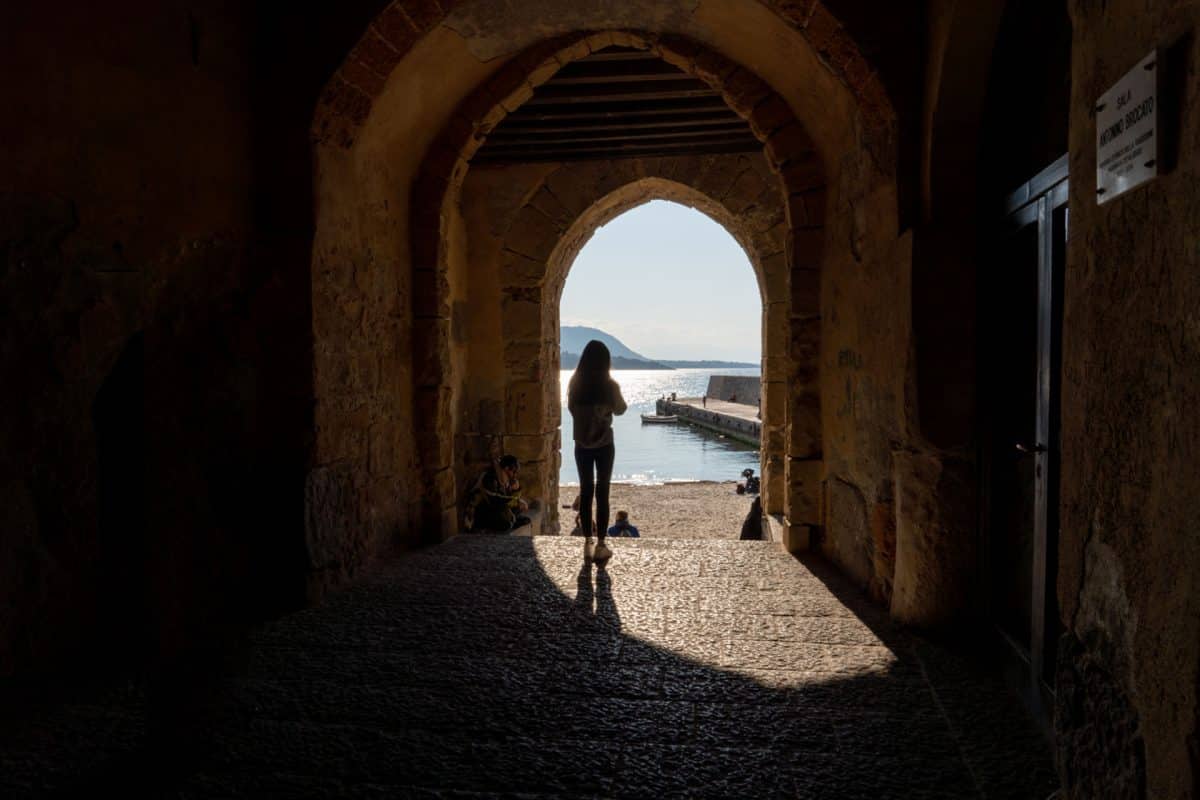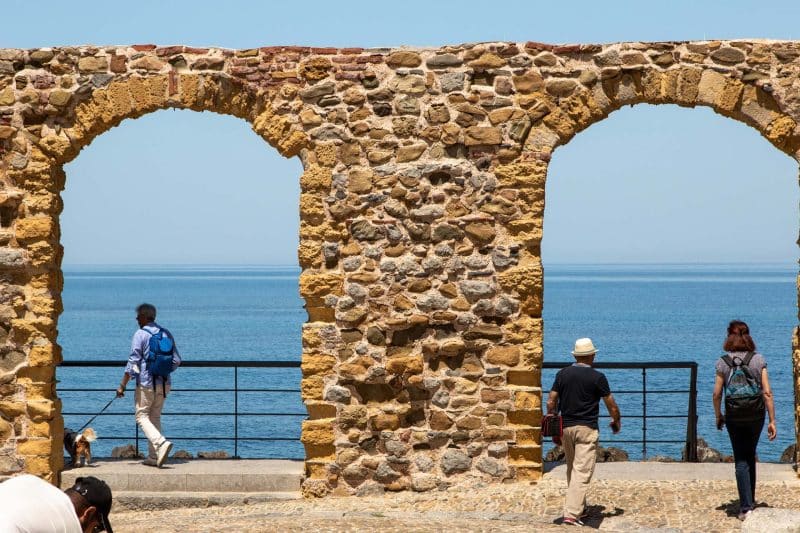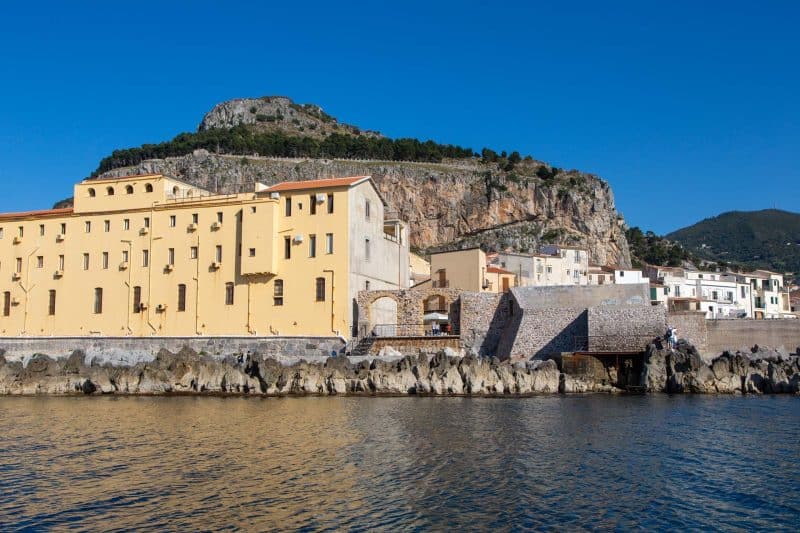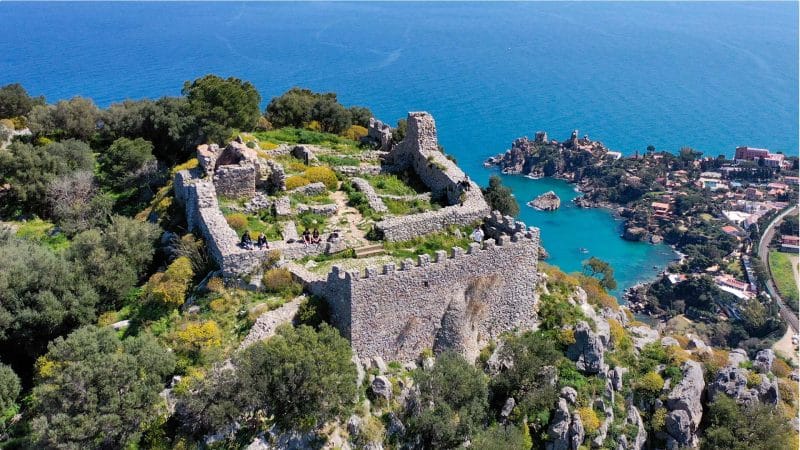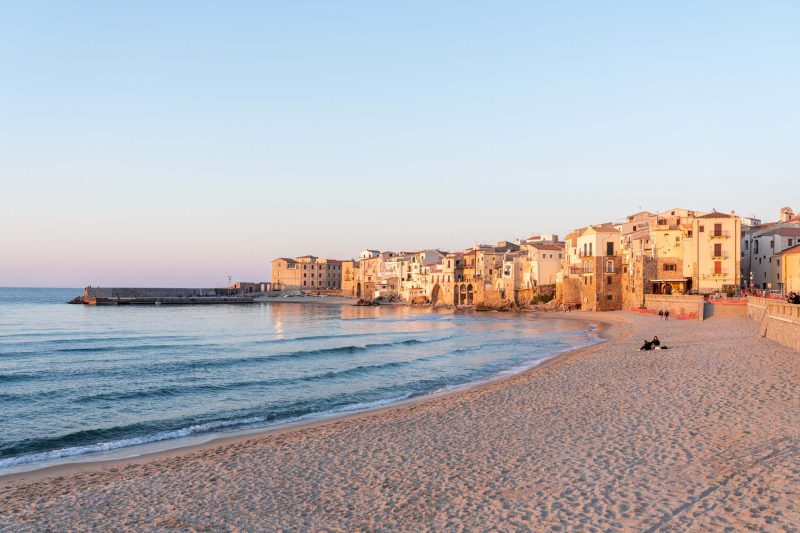
Cefalù in one day? Too little. If at first glance this fantastic village on the sea seems small and collected, on closer inspection offers many of those treasures that to appreciate and enjoy them, you need at least four days, preferably in autumn, winter and spring when the lack of summer crowds and mild weather make the visit more enjoyable.
However, we have prepared for you special itineraries for every need. You will find a suitable route to visit Cefalù in one day and to discover Cefalù in 2 days. But also in 3 and more days, if you want to know and really enjoy this beautiful territory on the border between sea and mountains.
Cefalù in one day
Let yourself be enchanted by the interweaving of sea, mountains, art, nature and culture that you will find before your arrival in Cefalù. A simple walk through the historic center, discovering medieval monuments and fascinating views of the sea, will spark your curiosity and push you to deepen, in the following days, the knowledge of one of the most beautiful villages in Italy.
Corso Ruggero and the view of the Cathedral
Our advice, to admire Cefalù in a day, is to start the walk from Corso Ruggero, the heart of the historic village (in the stretch between Via Amendola and Via Vanni there is the Info Point). Here you will find some of the main treasures, from the stretch of Roman road to the famous Norman Cathedral. Extending the visit of a few days you can visit with calm the interior of the Cathedral, its wonderful cloister, the roofs and towers from which you can enjoy an incomparable view over the bay of Cefalù and the Fortress behind it.
The views of the sea
Walk all the way to the sea and look out from the Bastion of Capo Marchiafava to discover the first exciting panorama on the bay. You will discover the others panoramas by proceeding towards Piazza Marina and the pier. At this point, you must take a selfie in front of Porta Pescara and relax on the beach of the old pier: with the blue sea in front and the fishermen’s houses behind you will seem to be inside a movie. In fact, some of the most exciting scenes from Nuovo cinema paradiso, the film by Giuseppe Tornatore, Oscar 1989 were shot here.
Alleys, courtyards, newsstands and squares
Continuing the walk through alleys and squares you will discover the Medieval Wash-house: facing the beautiful stone staircase lumachella and feel the ripple of the waters that flow. Further on, there is the Salvatore Cicero Municipal Theatre. Walking up and down the alleys you will discover many votive edicole, testimonies of popular devotion that dot with flowers and colors these ancient stones. Look out over the courtyards that open up along the streets and savour the spirit of slowness and genuineness that permeates this maritime community. But return with calm to visit the historic buildings, from the theater to the Mandralisca Museum that houses the famous Portrait of the unknown by Antonello da Messina. The beauty is all yet to be discovered.
Cefalù in 2 days
If Cefalù in one day shows its most evident beauty, Cefalù in 2 days begins to reveal a little of its charm. But to discover the true soul of this ancient place, its most beautiful views and the artistic and natural treasures it holds, you should take advantage of the Cefalù itinerary in 3 days and stop again to experience the typical slowness of the Sicilian seaside village and discover its equally fascinating surroundings.
The Cathedral
It is the cathedral basilica of La Trasfigurazione commissioned by Ruggero, first king of Sicily, in the 12th century. The two towers, the elevated position and la Rocca’s background make it majestic. The interiors are bare and thus highlight the famous Byzantine mosaics of 1148, with the large figure of Christ pantocrator in the center. Since 2015 the cathedral is part of the UNESCO Arab-Norman route. The mosaics are gold and the paintings on a golden background: the glitter is a spectacle. Next to it is the Capitolare Cloister, the oldest in Sicily of the type with capital double on double column. On the capitals you will be amazed by the figures of monkeys, acrobats and fantastic beasts. Stay one more day in Cefalù so you can also enjoy the view from the towers and roofs.
Mandralisca Museum
Cefalù in 2 days allows you to explore many aspects. One of these is its museum. The focal point is of course the Mandralisca Museum, a multidisciplinary museum for all tastes: you can choose to lose yourself in the rooms of the archaeological collection (stop in front of the famous Crater of the Tuna Seller, a colonnette vase and red figures from 480 B.C. approximately). Or, to discover the rich money, a collection of malacological (mollusks) among the richest in Europe, or among furniture and furnishings of the family Mandralisca. And of course in the famous art gallery: here is the highlight, Portrait of an unknown Antonello da Messina, the second most famous smile in the world, after the Mona Lisa one! Open daily, 9 a.m. – 11 p.m.
The Roman road and the Osterio Magno
What about a first century dive? Visit the archaeological site of the Roman Road, a stretch of cobblestone oriented in NE-SO direction, paved with well-preserved sandstone slabs, 6 meters long and just over half in width. It was found during the construction of the complex of the Court of the Stars, an exhibition space considered one of the most emblematic buildings of the twentieth century (open from Tuesday to Sunday 8:30 a.m. – 1:30 p.m., 6 p.m.- 11 p.m.). This archaeological site is located a few meters from the Osterio Magno, the fortified palace of the 12th century, probably Domus Regia of Ruggero the Norman (open every day, 10 a.m. – 1 p.m., 3 p.m.- 6 p.m.).
The Salvatore Cicero Municipal Theatre
Typical 19th century theatre in the shape of a horseshoe. It was the headquarters of the German troops during World War II but is most famous as the set of the 1989 Oscar-winning film Nuovo Cinema Paradiso (by Giuseppe Tornatore). Sit in the armchair, look out from the boxes and relive the magic of the film. Open from Tuesday to Sunday 9 a.m. – 2 p.m., 3 p.m. – 8 p.m.
The medieval wash-house
It is next to the late Renaissance Palazzo Martino: you arrive from a short staircase in lumachella stone and you can already hear the rippling of the waters of the Cefalino river that flow from twenty-two cast iron mouths with lion heads. Pure waters because of karst origin. Or, as the legend goes, because you spring from the tears of a desperate nymph after killing the beloved found guilty of treason. Immerse yourself in this magical place: don’t you feel like you can hear women singing while they do the laundry? Open every day from 8 a.m.- 12 a.m.
Porta Pescara, Piazza Marina and the beach of the old Pier
Porta Pescara is located just beyond the wash-house, it is the only surviving of the four doors of medieval age, then reworked by the viceroy of Sicily in 1570. With its majestic gothic arch, it is one of the perfect points for a selfie by the sea. Piazza Marina, right in front of it, is a sea platform with a long pier from which to observe the beach of the old village, with the fishermen’s houses and the ogival arches used as shelters for boats.
The Capo Marchiafava Bastion and the ancient walls
From Piazza Marina you can walk along the ancient walls (dating back to the 5th century BC), called “megalithic” because they consist of huge blocks in stone lumachella superimposed that protected the city from the storms. After the sixteenth century, the walls were integrated into the urban fabric. You can see this extraordinary work of “sewing” from the 17th century bastion of Marchiafava, from the Postierla (a window open on the walls) and from Porta Giudecca (the entrance door to the historic Jewish quarter). Near these emblematic places, you will find openings to go beyond the walls and see the city from the sea. Along the rocks has been made a path with steps and bridges that allows you to walk easily on the rocks, from Giudecca back to Piazza Marina, with the sea breeze on one side and the beautiful panorama of the megalithic walls on the other.
.
Cefalù in 3 days
To the previous itinerary, Cefalù in 2 days, you can add other destinations that will allow you to appreciate even more the magic of the village. Walking more calmly through alleys and squares you can stop in the historic delis to taste street food, such as arancine, panelle and crocché or stop to taste typical dishes in restaurants, such as Pasta a taianu of Arabic origin, Cacio alla argentiera and dishes based on capone and fresh fish. But above all, you will have time to discover the charming district of Sant’Ambrogio and the mysterious Rocca that gave its name to the village: the name Cefalù, in fact, comes from the Greek kefa or kefalé, that is head, referring to the promontory behind the Cathedral.
The Rocca di Cefalù
The effort of climbing (you climb up the stairs of Piazza Garibaldi) is amply rewarded by the view. Proceeding along the staircase you see all Cefalù unveil little by little: at sunset it dresses in a special light. From the top of this spectacular fortress, you can also see what the alleys hide, such as the perimeter of the fortified walls and the sea beds that will leave you breathless.
Here you can stop even a whole day, there are comfortable tables for the picnic and a panorama of which you will not tire easily. The are many things to visit on the promontory: the Temple of Diana, megalithic building of the 5th-6th century B.C. but with uncertain origins, the cisterns of the 9th century B.C., the church of Sant’Anna, a panoramic point with an iron cross overlooking the Cathedral and the ruins of the late medieval castle. Open every day from 8 a.m. – 7 p.m., last entry at 5:30 p.m. (October/April).
The beaches of Cefalù
Away from the summer crowds, the beaches of Cefalù are even more beautiful to discover and visit. The calm waters and mild climate allow to walk pied dans l’eau even in spring and late autumn. The entire coast of Cefalù is a succession of bays, cliffs and beaches overlooking the blue of the Tyrrhenian Sea. Besides, the whole history of Cefalù began by sea and from the sea it evolved: it was the sea that brought the Greeks who founded it and it was the sea that decreed its fortune. To immerse yourself in its blue, you can choose the beautiful beaches of Caldura, Salinelle and Capo Playa, the quiet S. Ambrogio or the “lively” Pollina.
Sant’Ambrogio hamlet
Loved by the locals, Sant’Ambrogio is a hamlet about 6 kilometers from Cefalù that offers beautiful views of the village. For its shape, it represents a real terrace on the Tyrrhenian Sea, right in the center of the gulf between the rocks of Calura and Finale. This “village in the village” was born in the seventeenth century as a village of farmers: the church, the alleys with basole and ancient trazzere make it a characteristic place to walk looking at the sea at every glance.


